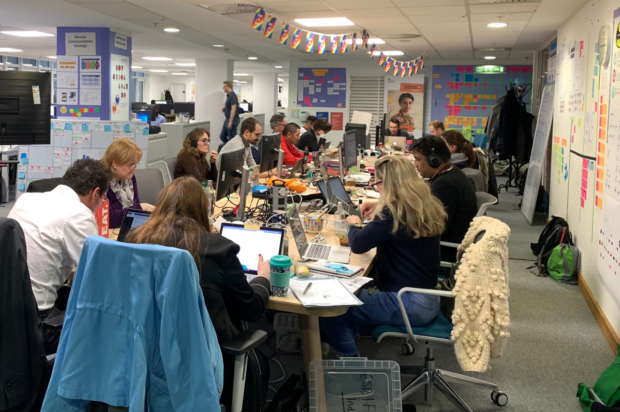
It’s been a busy year at DfE Digital.
We’re now 18 months old and have started establishing ourselves as a small team who cover a lot of ground when it comes to helping our colleagues work in more user-centred ways. Here’s a little list of just some of the things we’ve done, or helped to do, during 2018.
Find postgraduate teacher training
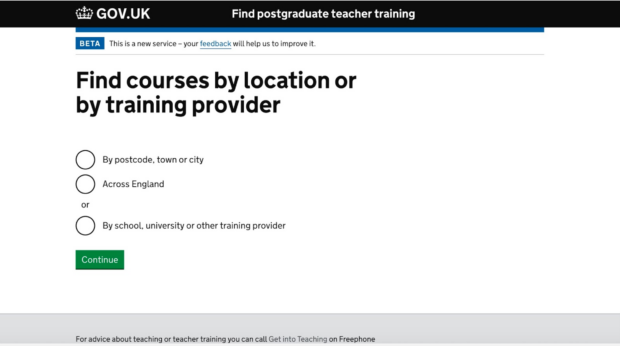
This service on GOV.UK makes it easier for postgraduates to find teacher training courses. In the past, courses like this were hard to search for and it was hard to understand what the courses were offering. It was also difficult to find out how to apply. This new service makes that information simpler and easier to find and understand.
Publish postgraduate teacher training courses
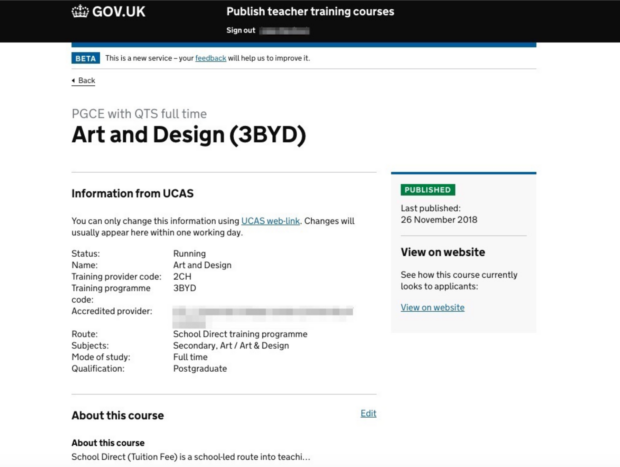
This is the suppliers' end of the above service. It makes it easy for training organisations to add details about postgraduate teacher training courses. In future, it will let them publish even more detailed information about courses so that applicants can find one that meets their needs.
Teaching Vacancies
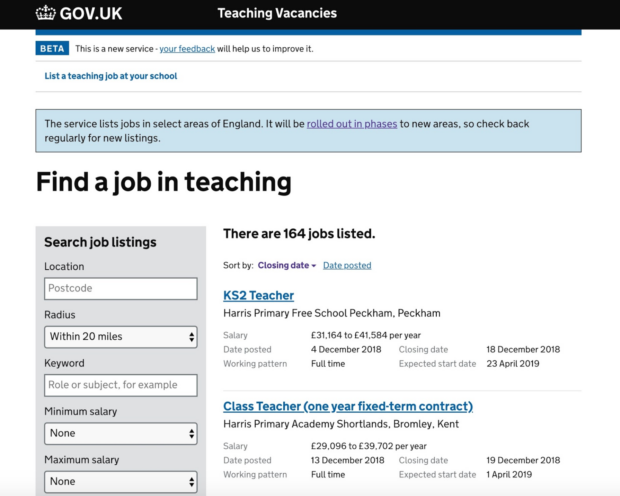
Every year, schools spend about £75 million listing job vacancies online. That money could be better spent on teachers, supplies and estates. We designed and built Teaching Vacancies, a user-centered free service for schools to list teaching jobs, and an easy way for teachers to search for their next career move.
The service is being rolled out in phases. It uses GOV.UK Notify as part of the process of inviting new schools to join each phase, as well as the DfE Sign-in service (more about that below). Feedback from users has been very positive, and so far over 2,350 schools have registered for an account.
The service recently passed its beta assessment as measured against the service standard. In its report, the assessment panel said: “The team should be congratulated for the significant progress they’ve made.”
List a teaching job

The Teaching Vacancies service needed a way for school administrators to add job vacancies to the list. That’s what this service does. This screenshot shows what a school user would see when previewing a listing, prior to publishing. We can’t sign in with a school’s credentials to show you a real listing, so this is a mock-up - hence the Latin text.
School improvement content on GOV.UK
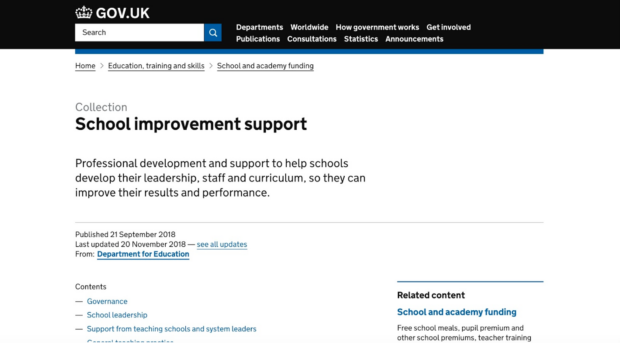
User research told us that schools and school leaders found it difficult to understand what support and funding was available for school improvement, as well as how to set about applying for it. “School improvement” is a term widely used by education professionals, including many of us at DfE.
A multidisciplinary team of policy and digital service experts did some user research and made a set of new pages on GOV.UK designed to meet the needs of school leaders seeking help with funding. Finding information about funding was previously confusing and time-consuming; now it is clear and quick.
DfE Sign-in

As DfE builds more digital services directly aimed at people who work in schools and other educational establishments, we need a way to prove that they actually do work for the organisation that they claim to work for.
GOV.UK Verify is an excellent service but does not yet meet this need. We decided to make something that did. Members of the DfE Digital team worked with colleagues from the DfE Tech team to make a new DfE Sign-in service, which provides users with a secure way to prove where they work. It has since become part of many other DfE digital services that require identity verification.
A user-centred teacher recruitment and retention strategy
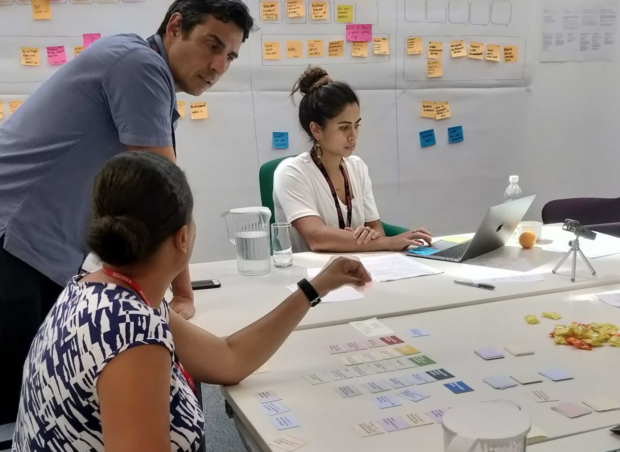
One of DfE’s priorities is recruiting more teachers, and keeping the ones we’ve already got. We know that teaching is really challenging and data shows that around 20% of teachers leave the profession in the first 2 years of doing the job, and 30% leave in the first 5 years.
A member of the DfE Digital team worked with policy experts on a discovery to better understand user needs. They conducted user research with 165 current teachers and people who have recently left teaching, asking questions such as: “What would it take for you to come back to teaching?” or “What do you need to prevent you leaving in the first place?”
Doing this research helped the team write a strategy that was more user-centred.
It now includes sections addressing supportive school cultures, the role of leadership in creating a rewarding and sustainable teaching experience, and the importance of supporting teacher mental health and wellbeing - all of which the team found to be very important for users (in this case, teachers) and would not otherwise have been considered.
Work continues on this strategy, which should be published early next year.
New guidance for T Level providers
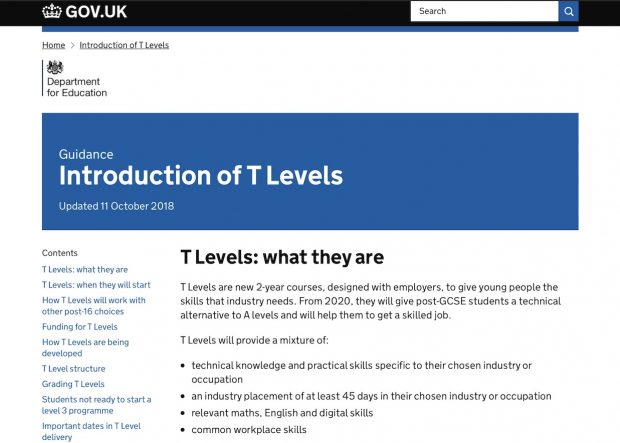
T Levels are new qualifications for post-GCSE students, due to be introduced in 2020. Until recently, the guidance available for institutions wanting to offer T Level courses was hard to find. It wasn’t all kept in one place, and existed in a mixture of PDF documents and other files that were usually emailed from person to person.
After doing some research with prospective T Level providers, we worked with members of the policy team to design new guidance - easier to find and to read, and hosted on GOV.UK.
In addition, our work with the policy team helped them to write a plan for the next phase of the T Levels project that was more directly related to user needs. User research involving 650 students from all over the UK helped ensure that the plan better reflects their needs.
A discovery to improve uptake of modern foreign languages courses
Members of the User Centred Design Lab helped with a discovery to explore the reasons why fewer students take modern foreign languages courses at GCSE and beyond.
User research directly with students helped the team better understand why take-up is low. One key insight was that students would prefer to hear more from peers who have already trodden the same path, studying modern foreign languages at higher levels.
This discovery helped us plan for an alpha project to explore ways of connecting younger students with those older peers, so they can ask questions and get encouragement directly from the people they’re most keen to hear from. That alpha is expected to start in February 2019.
A discovery to understand the blockers to converting to academy status

All schools can apply to become an academy, which means they are no longer funded and managed by their local authority. Funding for academies comes directly from DfE.
User research with school leaders and chief executives of multi-academy trusts (organisations that run several different academies) showed that the process of converting to academy status was seen as complicated and opaque. The process is predominantly paper-based, and divided by DfE policy experts into stages that the users themselves don’t see.
One user said: “How you see it in the department isn’t the same as how people see it from outside.”
The research showed that DfE was not providing clear enough guidance, and was not making clear to users how long the process would take, or how far through it a particular application had got.
The interesting result of this discovery was that it showed us that we needed a better understanding of how users see the process. We decided that a second discovery was probably the best next step, and that should start in the new year.
Coaching and helping
There are many teams in DfE who are not working on a digital product or service, but asked us for coaching, mentoring, or advice. Over the past year we worked with most of the 51 product teams in DfE. Early next year, we’re going to be hiring some more people to focus specifically on coaching.
There’s a lot more to say about this work, but this post isn’t the place to say it. It’s hard to “show the thing” when the thing is “having conversations with people to help them make decisions”. We’ll tell you more next year.
Well done team

Even I was surprised, as I wrote this, at how long the list is. And as I said at the start - this isn’t even all of it.
It’s been a terrific year of hard work and excellent collaboration with colleagues across the department. The digital team is not, and has never wanted to be, a separate silo doing its own stuff. We’re here to help the rest of the organisation adapt to the internet era, and this year’s work feels like really good progress.
To focus internally for a moment, I want to take this opportunity to thank everyone we’ve worked with, particularly colleagues in the Technology and Data Directorates, the Major Projects Directorate, and hundreds of operational, delivery and policy professionals up and down the country who’ve welcomed us into their teams and their work.
It’s a team effort, and a team I’m delighted to be a part of.
Have a good Christmas break. We’ll be back in early January, with some more stories to tell.
Keep up to date with our blog by subscribing.
Recent Comments